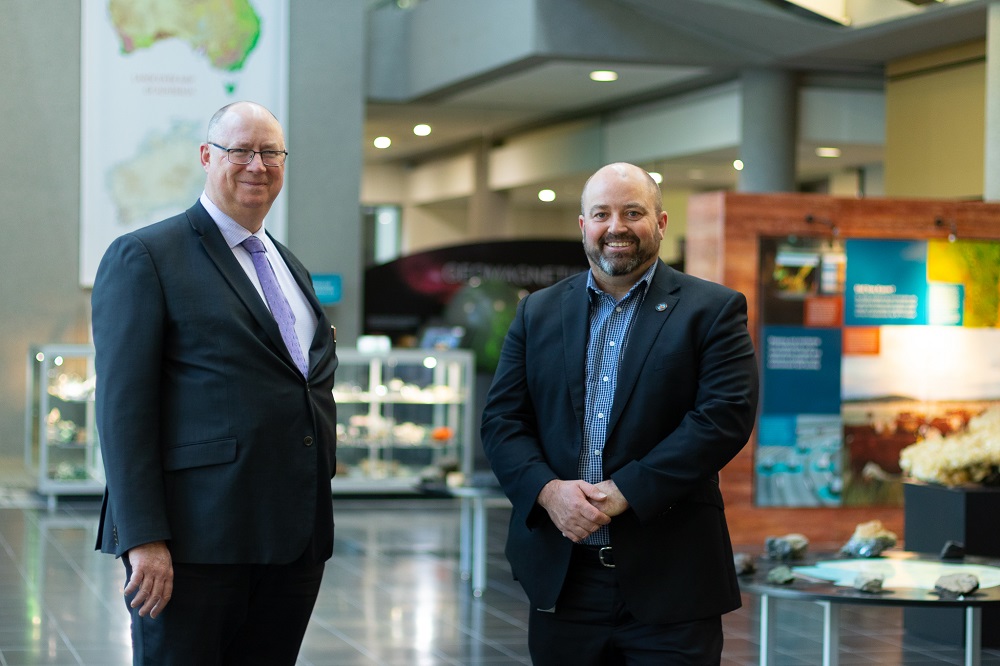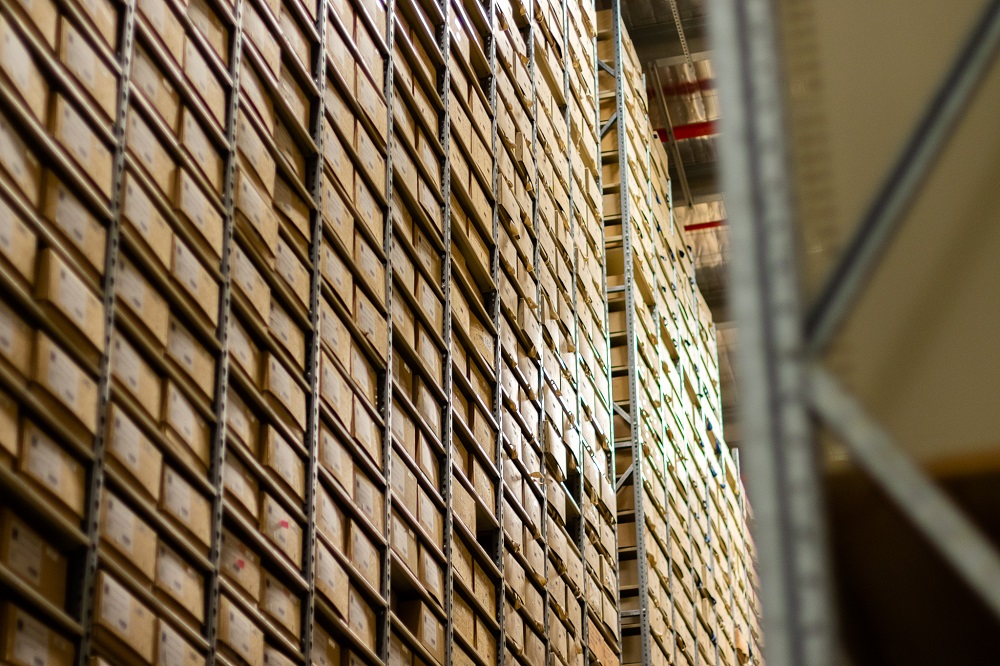Suzanne Lazaroo
16 July 2021: The University of Canberra has extended the Matthias Economic Geological Collection on a long term loan basis to Geoscience Australia, making the significant mineral collection more accessible to researchers across the country.
Comprising over 4,000 specimens worth over $580,000, the scientific collection is named after its founder, Professor Ian Matthias.
In the early 1970s, Professor Matthias taught economic geology at the Canberra College of Advanced Education – the precursor to the University of Canberra – and started collecting rock and mineral samples from across the globe, for teaching purposes.
Demand for Australian specimens was great, and Professor Matthias organised collection field trips to some of the biggest mines in Australia, including those at Broken Hill.

“The Matthias Economic Geological Collection is of national significance, and was once one of the largest mineral collections in the southern hemisphere,” said Associate Vice-President of Campus Estate John Owens.
The University’s Art Collection Coordinator Alex Stalker-Booth said that the collection includes some samples from sites across the world which are now inaccessible, whether for political reasons or because mines and quarries have since closed. Almost every economic mineral type is represented.
“It also contains pre-Cambrian materials, some of the oldest on earth – around 3.4 billion years old – the stuff that congealed out of the molten centre of the earth,” he said.
When the University offered geology as a field of study, the collection was showcased in its own museum – however, when that study ceased, it was put in storage.
Considering the value and usefulness of the collection’s future, the UC Collections Committee decided that it should be made available to the community in its entirety – and as Australia's pre-eminent public sector geoscience organisation, Geoscience Australia will be a perfect home for the collection for the next decade.

Geoscience Australia’s Chief Scientist Dr Steve Hill is familiar with the collection – he taught geology at the University of Canberra for 10 years – and said that the country’s pre-eminent public sector geoscience organisation was pleased to receive such a significant collection from the University.
“The collection greatly complements our National Mineral and Fossil Collection, which houses over 300,000 world-class mineral, meteorite, fossil, and rock thin section specimens,” Dr Hill said.
“Because the Matthias Economic Geological Collection comes from so many diverse sites worldwide, it provides a valuable basis of comparison for research.
“We are looking forward to making it available to researchers who will deepen the knowledge we have of Australia’s economic geology, and to working with the University of Canberra to catalogue and allow all Australians to access this collection online.”
The ten-year loan can be recalled if the University should decide to once again teach geology.
“This arrangement will help to ensure the integrity of the collection, and provide greater access to it for display and research purposes,” Mr Owens said. “It’s an incredible collection, and we are happy to make it available to more people.”
The arrangement has also created Work Integrated Learning (WIL) opportunities for University of Canberra students.
“We already have a UC intern working with Geoscience Australia staff to catalogue the collection, and provide online access to it,” Mr Owens said. “We look forward to even more opportunities opening up in the future.”


